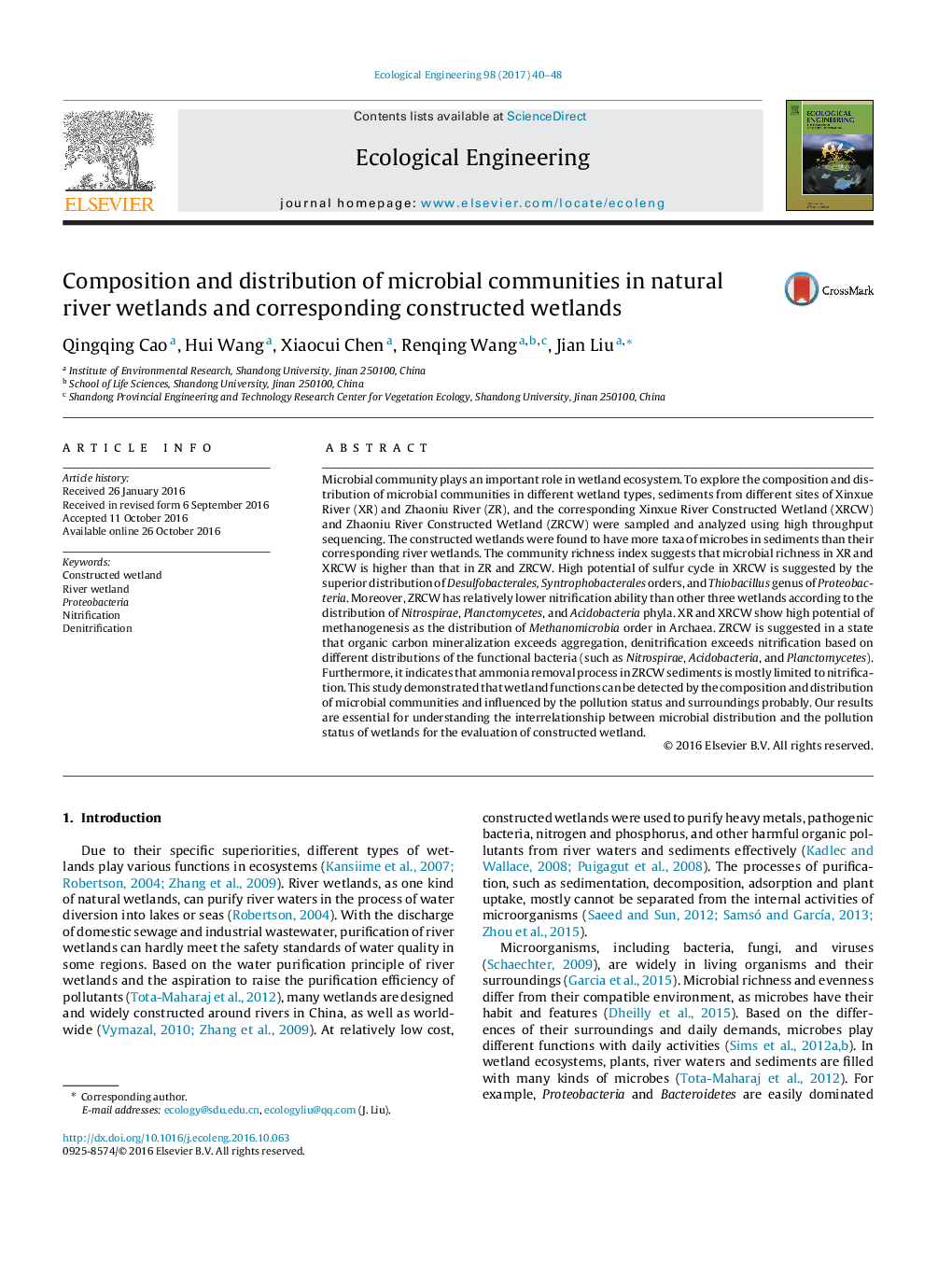| Article ID | Journal | Published Year | Pages | File Type |
|---|---|---|---|---|
| 5744052 | Ecological Engineering | 2017 | 9 Pages |
Microbial community plays an important role in wetland ecosystem. To explore the composition and distribution of microbial communities in different wetland types, sediments from different sites of Xinxue River (XR) and Zhaoniu River (ZR), and the corresponding Xinxue River Constructed Wetland (XRCW) and Zhaoniu River Constructed Wetland (ZRCW) were sampled and analyzed using high throughput sequencing. The constructed wetlands were found to have more taxa of microbes in sediments than their corresponding river wetlands. The community richness index suggests that microbial richness in XR and XRCW is higher than that in ZR and ZRCW. High potential of sulfur cycle in XRCW is suggested by the superior distribution of Desulfobacterales, Syntrophobacterales orders, and Thiobacillus genus of Proteobacteria. Moreover, ZRCW has relatively lower nitrification ability than other three wetlands according to the distribution of Nitrospirae, Planctomycetes, and Acidobacteria phyla. XR and XRCW show high potential of methanogenesis as the distribution of Methanomicrobia order in Archaea. ZRCW is suggested in a state that organic carbon mineralization exceeds aggregation, denitrification exceeds nitrification based on different distributions of the functional bacteria (such as Nitrospirae, Acidobacteria, and Planctomycetes). Furthermore, it indicates that ammonia removal process in ZRCW sediments is mostly limited to nitrification. This study demonstrated that wetland functions can be detected by the composition and distribution of microbial communities and influenced by the pollution status and surroundings probably. Our results are essential for understanding the interrelationship between microbial distribution and the pollution status of wetlands for the evaluation of constructed wetland.
